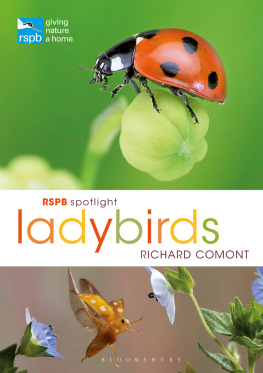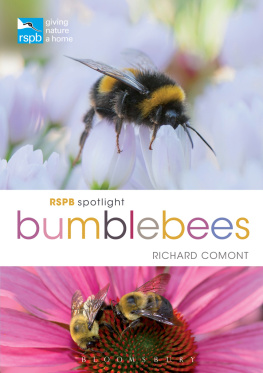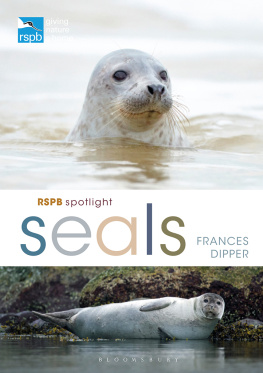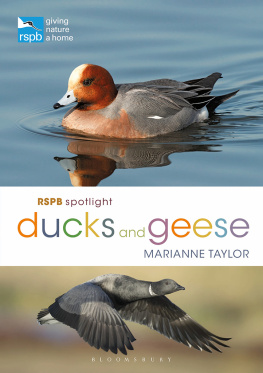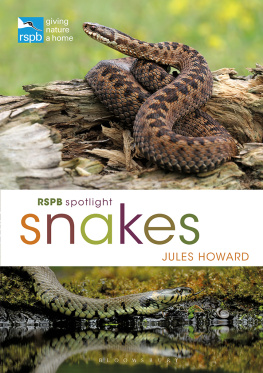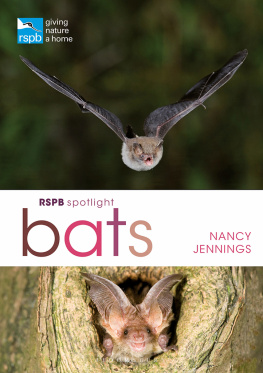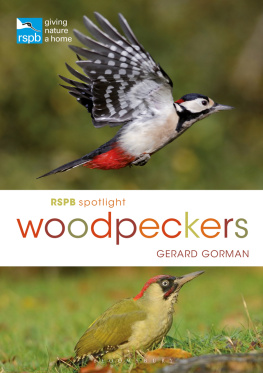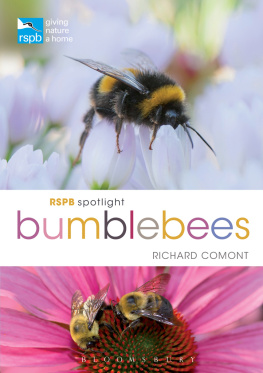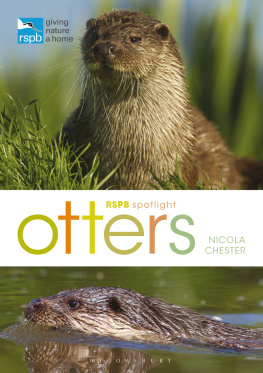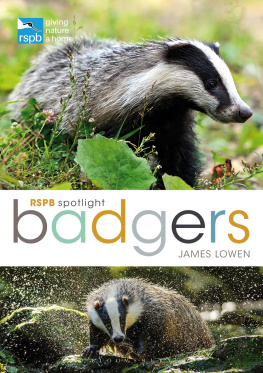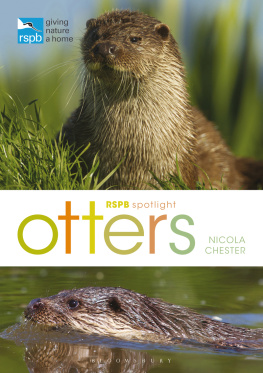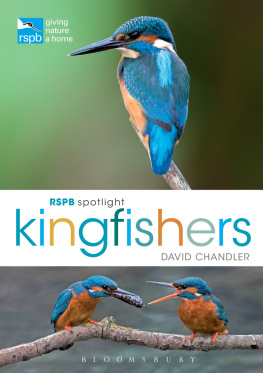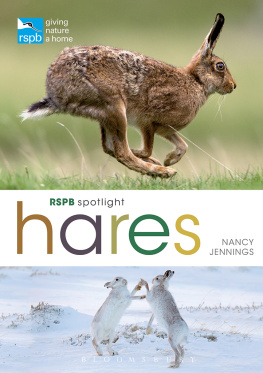Richard Comont - RSPB Spotlight Ladybirds
Here you can read online Richard Comont - RSPB Spotlight Ladybirds full text of the book (entire story) in english for free. Download pdf and epub, get meaning, cover and reviews about this ebook. year: 2019, publisher: Bloomsbury Publishing, genre: Children. Description of the work, (preface) as well as reviews are available. Best literature library LitArk.com created for fans of good reading and offers a wide selection of genres:
Romance novel
Science fiction
Adventure
Detective
Science
History
Home and family
Prose
Art
Politics
Computer
Non-fiction
Religion
Business
Children
Humor
Choose a favorite category and find really read worthwhile books. Enjoy immersion in the world of imagination, feel the emotions of the characters or learn something new for yourself, make an fascinating discovery.
- Book:RSPB Spotlight Ladybirds
- Author:
- Publisher:Bloomsbury Publishing
- Genre:
- Year:2019
- Rating:5 / 5
- Favourites:Add to favourites
- Your mark:
- 100
- 1
- 2
- 3
- 4
- 5
RSPB Spotlight Ladybirds: summary, description and annotation
We offer to read an annotation, description, summary or preface (depends on what the author of the book "RSPB Spotlight Ladybirds" wrote himself). If you haven't found the necessary information about the book — write in the comments, we will try to find it.
RSPB Spotlight Ladybirds — read online for free the complete book (whole text) full work
Below is the text of the book, divided by pages. System saving the place of the last page read, allows you to conveniently read the book "RSPB Spotlight Ladybirds" online for free, without having to search again every time where you left off. Put a bookmark, and you can go to the page where you finished reading at any time.
Font size:
Interval:
Bookmark:


BLOOMSBURY WILDLIFE
Bloomsbury Publishing Plc
50 Bedford Square, London, WC1B 3DP, UK
This electronic edition published in 2019 by Bloomsbury Publishing Plc
BLOOMSBURY, BLOOMSBURY WILDLIFE and the Diana logo are trademarks of Bloomsbury Publishing Plc
First published in the United Kingdom, 2019
Copyright Richard Comont, 2019
Richard Comont has asserted his right under the Copyright, Designs and Patents Act, 1988, to be identified as Author of this work
For legal purposes the constitute an extension of this copyright page
All rights reserved
You may not copy, distribute, transmit, reproduce or otherwise make available this publication (or any part of it) in any form, or by any means (including without limitation electronic, digital, optical, mechanical, photocopying, printing, recording or otherwise), without the prior written permission of the publisher. Any person who does any unauthorised act in relation to this publication may be liable to criminal prosecution and civil claims for damages.
Bloomsbury Publishing Plc does not have any control over, or responsibility for, any third-party websites referred to or in this book. All internet addresses given in this book were correct at the time of going to press. The author and publisher regret any inconvenience caused if addresses have changed or sites have ceased to exist, but can accept no responsibility for any such changes
A catalogue record for this book is available from the British Library
Library of Congress Cataloguing-in-Publication data has been applied for.
ISBN: 978-1-4729-5585-2 (PB)
ISBN: 978-1-4729-5586-9 (eBook)
ISBN: 978-1-4729-5584-5 (ePDF)
To find out more about our authors and their books please visit www.bloomsbury.com where you will find extracts, author interviews and details of forthcoming events, and to be the first to hear about latest releases and special offers, sign up for our newsletter.

For all items sold, Bloomsbury Publishing will donate a minimum of 2% of the publishers receipts from sales of licensed titles to RSPB Sales Ltd, the trading subsidiary of the RSPB. Subsequent sellers of this book are not commercial participators for the purpose of Part II of the Charities Act 1992.
Contents


Ladybirds are familiar to most people, and can often be found in parks and gardens.
Meet the Ladybirds
Everyone loves a ladybird. Bright red, spattered with black spots, and clumsily endearing as they amble around the garden, ladybirds have been seen as lucky symbols of summer through the centuries. Farmers and gardeners appreciate them as guardians of plants against the greenfly hordes, and historically ladybirds have been connected to God or the Virgin Mary in thanks for the role they play in crop protection. Often associated with children, they have also been immortalised in rhymes and stories. But beyond our mental image of the lucky ladybird lies a hugely successful range of species, far more diverse than we give them credit for.
Ladybirds either the real thing or their images are never far away. Live ladybirds crowd our gardens and parks, trees and roadside verges, heathland, moorland and pond edges. Some species even venture inside our houses during the winter; once there, they are likely to meet pictures of themselves on books, clothing or any one of the huge number of items produced by organisations that use ladybirds as logos. One species in particular has a strong claim to be the single most iconic species of insect worldwide: the Seven-spot Ladybird (Coccinella septempunctata) is the symbol of Ladybird clothing, Dutch street tiles and much else besides, as well as the state insect of five US states and the star of more postage stamps than any other insect.

The Seven-spot Ladybird is perhaps the most iconic of all the ladybird species.

Some ladybirds are familiar because they share our homes in winter, such as these Harlequin Ladybirds.
Despite the lady- prefix to their common name, ladybirds are not all female, and nor are they birds (or bugs, despite the American name ladybug); instead, they are beetles. Ladybirds make up just over 1 per cent of the 4,000-plus British beetle species, but, brightly coloured and abundant in gardens, they punch far above their weight in terms of familiarity.

Farmers and gardeners value ladybirds for their pest-eating habits, which ultimately help protect crops and plants.
A diverse group
Not only are ladybirds common and widespread, they also come in countless colours and sizes. The Seven-spot Ladybird is perhaps the most iconic British insect, and the other black-spotted red species are swept along on its coat-tails of familiarity. But it is just one of 47 ladybird species resident in the UK and more than 6,000 species worldwide, found on every continent except Antarctica.

Ladybirds come in a range of different sizes: from Britains smallest ladybird, the Dot Ladybird (left), to our largest species, the Eyed Ladybird (right), which eats aphids that are bigger than its tiny cousin.
Compared with many other countries, the UKs total of 47 ladybird species is low; in contrast, the USA has 481 known species and Canada 162. The English Channel has acted as a barrier since the end of the last ice age, almost certainly preventing the colonisation of Britain by a range of species that are widespread on the north coasts of France, Belgium and Holland, including Oenopia conglobata, Cynegetis impunctata and Calvia decemguttata. However, even the British ladybird fauna is surprisingly diverse, and representative of the group across the world. It contains both the smallest and the largest species in Europe the 1mm (1/16in) Dot Ladybird (Stethorus pusillus) and the 9mm (5/16in) Eyed Ladybird (Anatis ocellata), respectively alongside a range of predators, herbivores and fungivores (fungus-feeders).

The 18-spot Ladybird is easily recognised by the cream markings smeared across a maroon background.
Worldwide, the smallest ladybirds are a mere 0.6mm (3/32in) long not much bigger than a full stop and even the largest are hardly giants at just more than 1cm (in). Most are spotty, though not just black on red: the background can be red, orange, yellow, brown, black or another colour, while the spots can be black, purple, white, red, orange or yellow. And the spots arent just round either they may be oval, triangular or kidney-shaped, or streaks, bullseye roundels or indeterminate blobs. Many ladybird species are brightly coloured but some are camouflaged a few species even manage to be both at the same time!
Font size:
Interval:
Bookmark:
Similar books «RSPB Spotlight Ladybirds»
Look at similar books to RSPB Spotlight Ladybirds. We have selected literature similar in name and meaning in the hope of providing readers with more options to find new, interesting, not yet read works.
Discussion, reviews of the book RSPB Spotlight Ladybirds and just readers' own opinions. Leave your comments, write what you think about the work, its meaning or the main characters. Specify what exactly you liked and what you didn't like, and why you think so.

